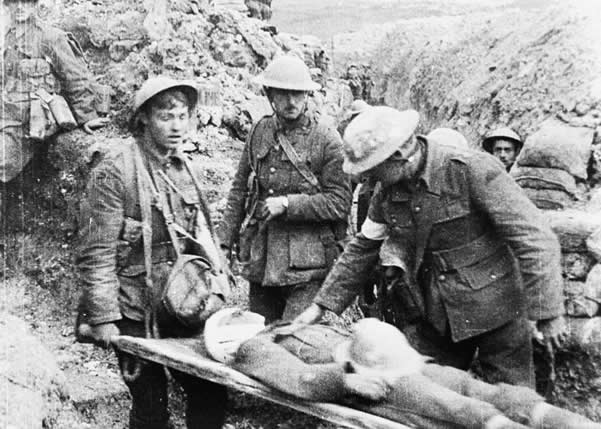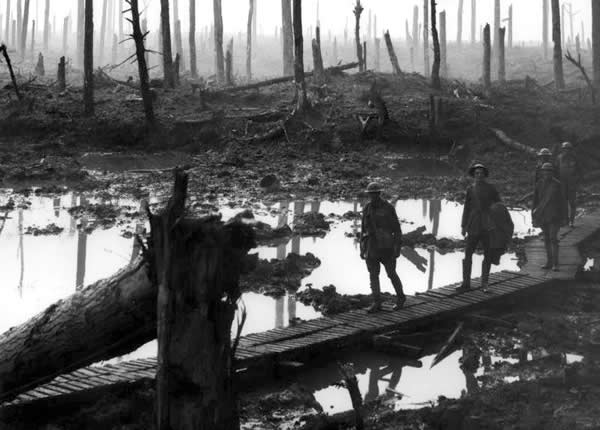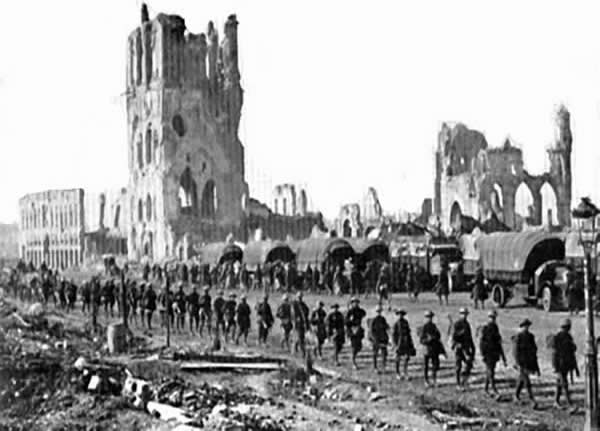The First Battle of the Marne was conducted between 6-12 September 1914, with the outcome bringing to an end the war of movement that had dominated the First World War since the beginning of August. Instead, with the German advance brought to a halt, stalemate and trench warfare ensued. Having invaded Belgium and north-eastern France, the German army had reached within 30 miles of Paris. Their progress had been rapid, having successfully beaten back Belgian, French and British forces in advancing deep into north-eastern France. Their advance was in pursuance of the aims of the Schlieffen Plan, whose primary focus was the swift defeat of France in the west before turning attention the Russian forces in the east.
As the German armies neared Paris, the French capital prepared itself for a siege. The defending French forces (Fifth and Sixth Armies) - and the British - were at the point of exhaustion, having retreated continuously for 10-12 days under repeated German attack until, directed by Joseph Joffre, the French Commander-in-Chief, they reached the south of the River Marne. With victory seemingly near, Alexander von Kluck's German First Army was instructed to encircle Paris from the east. The French government, similarly expecting the fall of the capital, left Paris for Bordeaux. Joseph Joffre, imperturbable in the face of crisis, resolved on 4 September to launch a counter-offensive strike, under the recommendation of the military governor of Paris, Gallieni, and aided by the British under Sir John French (the latter only after prompting by the British war minister, Lord Kitchener).
French medal commemorating the First Battle of the MarneJoffre authorised General Maunoury's Sixth Army - comprising 150,000 men - to attack the right flank of the German First Army in an action beginning on the morning of 6 September. In turning to meet the French attack a 30 mile wide gap appeared in the German lines between the First and Second Army, the latter commanded by the cautious General Karl von Bulow. The Allies were prompt in exploiting the break in the German lines, despatching troops from the British Expeditionary Force (BEF) to join the French Fifth Army in pouring through the gap between the two German armies, the right wing of Fifth Army simultaneously attacking the German Second Army. Nevertheless, the German forces were close to achieving a breakthrough against Maunoury's beleaguered forces between 6-8 September, and were only saved on 7 September by the aid of 6,000 French reserve infantry troops ferried from Paris in streams of taxi cabs, 600 in all.
The following night, on 8 September, the aggressive French commander General Franchet d'Esperey's Fifth Army launched a surprise attack against the German Second Army, serving to further widen the gap between the German First and Second Armies. D'Espery was a recent appointment, Joffre having given him command of Fifth Army in place of the dismissed General Lanrezac, who was deemed too cautious and wanting in 'offensive spirit'. French patrol on the Marne front On 9 September the German armies began a retreat ordered by the German Chief of Staff Helmuth von Moltke. Moltke feared an Allied breakthrough, plagued by poor communication from his lines at the Marne. The retreating armies were pursued by the French and British, although the pace of the Allied advance was slow - a mere 12 miles in one day. The German armies ceased their withdrawal after 40 miles at a point north of the River Aisne, where the First and Second Armies dug in, preparing trenches that were to last for several years.
In a strategic triumph at the First Battle of the Marne, which ended on 10 September, the French forces - assisted by the British - had succeeded in throwing back the German offensive, recapturing lost ground in the process. More importantly, the battle ended any hopes the Germans had of effectively bringing the war on the Western Front to an early close. Casualties at the battle were heavy. The French incurred 250,000 losses, and it is believed that the Germans suffered similar casualties (no official figures are available). The British recorded 12,733 casualties among the BEF.
Source firstworldwar.comCommonwealth War Graves
Lest We Forget
From 1914 to1918 97 men and one woman went to War - 20 men never came home. Read the life history of each man and learn where they died
Those Who Gave Their LivesLemsford local History Group WW1 Records
Memories & Letters
Memories from the people of Lemsford Parish – letters from the Front and home and much, much more
Local Parish Magazine
From the Bishop's Hatfield Parish Magazine 1914 to 1918, Church- Social - War Records
Servicemen of Lemsford
War records from 98 men who went to war. We show their memories images and why we should never forget them.
5 Facts the Great War
Battles of WW1

Battle of the Somme
1 July - 13 November 1916The British suffered around 420,000 casualties, the French 195,000 and the Germans around 650,000. Only in the sense of relieving the French at Verdun can the British have claimed any measure of success.

Battle of Passchendaele
31 July - 6 November 1917Passchendaele village lay barely five miles beyond the starting point of his offensive. Having prophesied a decisive success, it had taken over three months, 325,000 Allied and 260,000 German casualties

The First Battle of Ypres, 1914
October 19 to November 22, 1914First Battle of Ypres saw the BEF sustain 7,960 killed, 29,562 wounded, and 17,873 missing, while the French incurred between 50,000 and 85,000 casualties of all types. To the north, the Belgians took 21,562 casualties
